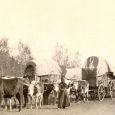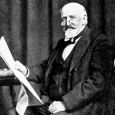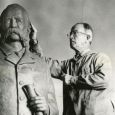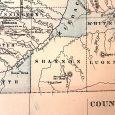The Gift of South Dakota
Subscriptions to South Dakota Magazine make great gifts!
Subscribe today — 1 year (6 issues) is just $29!
Naming South Dakota
Jan 29, 2014
Shakespeare wrote, “A rose by any other name would smell as sweet,” but is the same true of South Dakota? Perhaps you’ve never given much thought to the name of our fair state, but back in 1889 it was briefly a point of contention.
U. S. Rep. William Springer of Illinois, chairman of the House Committee on Territories, was no friend to Dakota. The Democratic leader had little interest in seeing Dakota Territory split into two states, both likely filled with Republican voters. Springer made himself more unpopular when he proposed a bill linking statehood for the Dakotas with the admission of New Mexico.
In January of 1889, Springer took another unpopular step. He contacted Garrick Mallory of the Bureau of Ethnology to request suggestions for unique names of native origin for the Dakotas and other territories seeking statehood. Mallory replied, “Two words purely Dakotan seem to have euphony and poetical merit. One is Winona, the name given to the first-born child of a Dakota woman, provided the first born is a female. The other is Tatanka, translated “Buffalo,” involving the idea of the land of the buffalo, which is appropriate to that region.” Mallory also proposed Sanona, “the old and correct form for the larger part of the Dakotan stock” and Teton or Titonwan.
Springer took a shine to Winona for the southern state, advocating that the north receive the name Dakota. “The name has become a part of our political history and has so many reasons to be remembered,” he said. (Under Springer’s scheme, New Mexico was to become Montezuma, and Washington would be dubbed either Tacoma or Laconica, depending on which newspaper was doing the reporting.)
One New York Herald editorial approved, declaring, “Let us have no more states with the abominable prefix of new, east or west, north or south. Let the names be simple, euphonious and original.” The Minneapolis Tribune agreed, adding, “It is bad enough that these objectionable adjectives have once been given a place; the confusion and inconvenience would be much more than doubled if the error were repeated, and we owe it to our children’s children to save them from the infliction.”
The Chicago Tribune was against the name change. “The Dakotas now have a good trademark. They are known by all the world over. The schoolboys of the two hemispheres know them by that name. Why then spoil all the maps and unsettle the knowledge of the children? Both North and South Dakota should hold on to their original baptismal names of honest aboriginal American origin and permit no silly namby-pamby change to be made in them.”
And what did Dakotans think of Springer’s idea? Yankton Daily Press and Dakotaian editors, wearied by the six-year struggle for statehood, wrote, “We are not going to quarrel with Mr. Springer over a name. Anything with the words ‘state of’ before it will sound very sweet.”
I don’t have to tell you how Springer’s name change idea worked out in the end. Just check your map, or your most recent issue of South Dakota Magazine. When the matter was put to a vote, north was officially North and south stayed South. Can you imagine it any other way?










Comments